 The Middle Ages are full of children dying within their childhood years. They would pick up illnesses that they couldn’t recover from and the medical knowledge just wasn’t as good as it is now. This was a reason for people to have so many children, despite the risks to the mother’s life.
The Middle Ages are full of children dying within their childhood years. They would pick up illnesses that they couldn’t recover from and the medical knowledge just wasn’t as good as it is now. This was a reason for people to have so many children, despite the risks to the mother’s life.
Edward and Eleanor were no strangers to this type of loss. Four of their children died within the ages of one and 11 years old.
The first was their first son, John, born on July 13, 1266. His birth would have been a big celebration as he would have been the next in line to the throne after his father—Henry III was still alive at this time—but it didn’t stopped the couple trying for more children, especially after the events of their first three children. John, unfortunately, died while being looked after by Richard, Earl of Cornwall, who was also his granduncle, on August 3, 1271.
Their second son, Henry, named after Edward’s father, seemed to be the heir that they had waited for. He lived to see three siblings born until he turned eight years old. Henry was born on May 6,1268, while his older brother was still living. He soon found himself go from the third in line to the second in line to the throne and the heir apparent upon the death of Henry III of England.
Henry was looked after by his grandmother, Eleanor of Province, since his parents were on the crusade at the time. His parents didn’t even return home to spend his last days with him. However, considering his grandmother had always been around, she would have been more familiar and a comfort to him. Henry was simply a sickly boy who died on October 14, 1274, with his grandmother around.
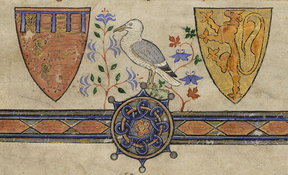 The next child to die before adulthood was Alphonso, named after Eleanor’s half-brother. He was 11 years old at the time of his death on August 19, 1284. At the time of his birth on November 24, 1273, he became heir apparent as the only living boy at the time. It all seemed to go so well. Unlike his brothers, Alphonso was a healthy child and was betrothed to Margaret, Floris V, Count of Holland’s daughter when he was 10 years old. However, Alphonso died of natural causes just a few months before their wedding was due to take place.
The next child to die before adulthood was Alphonso, named after Eleanor’s half-brother. He was 11 years old at the time of his death on August 19, 1284. At the time of his birth on November 24, 1273, he became heir apparent as the only living boy at the time. It all seemed to go so well. Unlike his brothers, Alphonso was a healthy child and was betrothed to Margaret, Floris V, Count of Holland’s daughter when he was 10 years old. However, Alphonso died of natural causes just a few months before their wedding was due to take place.
The fourth child was a girl, named Berengaria. Very little is known about her, except that she was born in May 1276 and died sometime between June 7, 1277 and 1278. Like the rest of her siblings, she was buried at Westminster Abbey.


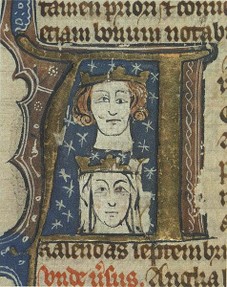 Unfortunately, there is no cause for the deaths of six stillborns or infant deaths. The first three children, all girls, of Edward and Eleanor died within their first year. Their first wasn’t even named and it is unknown whether she died at the time of birth or shortly afterwards. Both Katherine and Joan, who were at least three months old, were buried at Westminster Abbey.
Unfortunately, there is no cause for the deaths of six stillborns or infant deaths. The first three children, all girls, of Edward and Eleanor died within their first year. Their first wasn’t even named and it is unknown whether she died at the time of birth or shortly afterwards. Both Katherine and Joan, who were at least three months old, were buried at Westminster Abbey.


 The Middle Ages are full of children dying within their childhood years. They would pick up illnesses that they couldn’t recover from and the medical knowledge just wasn’t as good as it is now. This was a reason for people to have so many children, despite the risks to the mother’s life.
The Middle Ages are full of children dying within their childhood years. They would pick up illnesses that they couldn’t recover from and the medical knowledge just wasn’t as good as it is now. This was a reason for people to have so many children, despite the risks to the mother’s life. The next child to die before adulthood was Alphonso, named after Eleanor’s half-brother. He was 11 years old at the time of his death on August 19, 1284. At the time of his birth on November 24, 1273, he became heir apparent as the only living boy at the time. It all seemed to go so well. Unlike his brothers, Alphonso was a healthy child and was betrothed to Margaret, Floris V, Count of Holland’s daughter when he was 10 years old. However, Alphonso died of natural causes just a few months before their wedding was due to take place.
The next child to die before adulthood was Alphonso, named after Eleanor’s half-brother. He was 11 years old at the time of his death on August 19, 1284. At the time of his birth on November 24, 1273, he became heir apparent as the only living boy at the time. It all seemed to go so well. Unlike his brothers, Alphonso was a healthy child and was betrothed to Margaret, Floris V, Count of Holland’s daughter when he was 10 years old. However, Alphonso died of natural causes just a few months before their wedding was due to take place.


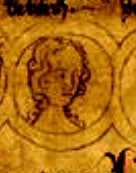 The first of those was Eleanor, named after her mother and paternal grandmother. She was born in June 1369 and went onto marry Henry III, Count of Bar in 1293. She grew up extremely close to her grandmother, Eleanor, since her parents spent much time away during the crusades. She was also close to her brother, Henry, who was sickly much of the time but a good companion for the English princess.
The first of those was Eleanor, named after her mother and paternal grandmother. She was born in June 1369 and went onto marry Henry III, Count of Bar in 1293. She grew up extremely close to her grandmother, Eleanor, since her parents spent much time away during the crusades. She was also close to her brother, Henry, who was sickly much of the time but a good companion for the English princess.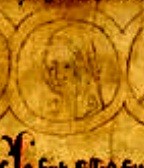 The second to survive adulthood was Joan of Acre in 1272. At the time of her birth, her parents were on the crusade. They took her to Spain where she was then left in the care of Eleanor’s mother, Joan, Countess of Ponthieu. She was raised by her namesake in France and received a good education but was also doted on and spoilt by her maternal grandmother.
The second to survive adulthood was Joan of Acre in 1272. At the time of her birth, her parents were on the crusade. They took her to Spain where she was then left in the care of Eleanor’s mother, Joan, Countess of Ponthieu. She was raised by her namesake in France and received a good education but was also doted on and spoilt by her maternal grandmother. Daughter number three to survive and marry was Margaret, who was born around March 15, 1275. Margaret had known her husband for some time and they often wrote to each other during their betrothal. You would be forgiven to think that this would set up a good marriage but it didn’t.
Daughter number three to survive and marry was Margaret, who was born around March 15, 1275. Margaret had known her husband for some time and they often wrote to each other during their betrothal. You would be forgiven to think that this would set up a good marriage but it didn’t. Mary was Edward I’s seventh named daughter and is the fourth on the list of surviving children. At the time of her birth in March 1279, Mary’s grandmother, Eleanor, had retired to Amesbury priory and wanted Mary to become a nun there. She was dedicated to the priory when she was seven and became a formally veiled nun at the age of 12.
Mary was Edward I’s seventh named daughter and is the fourth on the list of surviving children. At the time of her birth in March 1279, Mary’s grandmother, Eleanor, had retired to Amesbury priory and wanted Mary to become a nun there. She was dedicated to the priory when she was seven and became a formally veiled nun at the age of 12.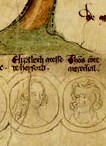 Just two years older than her brother, Edward, Elizabeth was the closest to him in age and personally. She was just three years old when Edward I decided who she would marry: John I, Count of Holland. Floris V accepted the proposal and John moved to England where he could be educated. The two married on January 8, 1297.
Just two years older than her brother, Edward, Elizabeth was the closest to him in age and personally. She was just three years old when Edward I decided who she would marry: John I, Count of Holland. Floris V accepted the proposal and John moved to England where he could be educated. The two married on January 8, 1297.


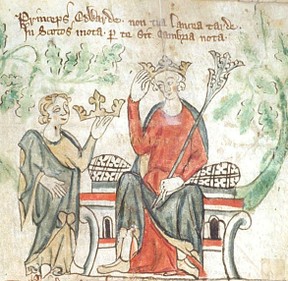 Finally, Edward II was born. His older brother, Alfonso, was still alive at the time but he quickly found himself as heir apparent. Unfortunately, Edward didn’t make a very good king, especially when compared to his father. He married his wife, Isabella of France on January 25, 1308, which would prove to be the worst decision he could make.
Finally, Edward II was born. His older brother, Alfonso, was still alive at the time but he quickly found himself as heir apparent. Unfortunately, Edward didn’t make a very good king, especially when compared to his father. He married his wife, Isabella of France on January 25, 1308, which would prove to be the worst decision he could make.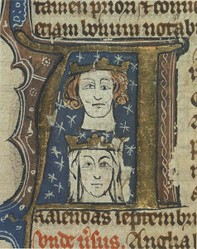

 Alternate History: What If Mary I Had a Child?on 01/26/2015
Alternate History: What If Mary I Had a Child?on 01/26/2015
 Francis II of France Dies: Mary, Queen of Scots Returns Homeon 12/05/2014
Francis II of France Dies: Mary, Queen of Scots Returns Homeon 12/05/2014
 Does Writedge Pay? Payment Proofon 12/03/2014
Does Writedge Pay? Payment Proofon 12/03/2014
 Alternate History: What If Lady Jane Grey Was Not Deposed?on 11/11/2014
Alternate History: What If Lady Jane Grey Was Not Deposed?on 11/11/2014

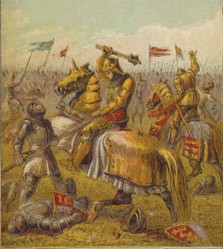
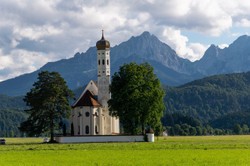
Comments
I know very little about his reign but from reading the stuff for this peace, I don't think I could remain objective enough to write about him. my heart broke at the thought of poor little Henry dying without his parents caring enough (at least that's the way it seemed) to see him and wee Joan not even feeling close to her parents.
I came across the list of all the children and of course curiosity got the better of me when realising Edward I I was there youngest son. I just had to do some more digging.
You're welcome.
I feel duty-bound to spit at any mention of Edward I. Nasty man. However, I didn't know about all of those dead children. I was too side-tracked by his actions in Wales to notice much about the home-life.
Thanks for the education.